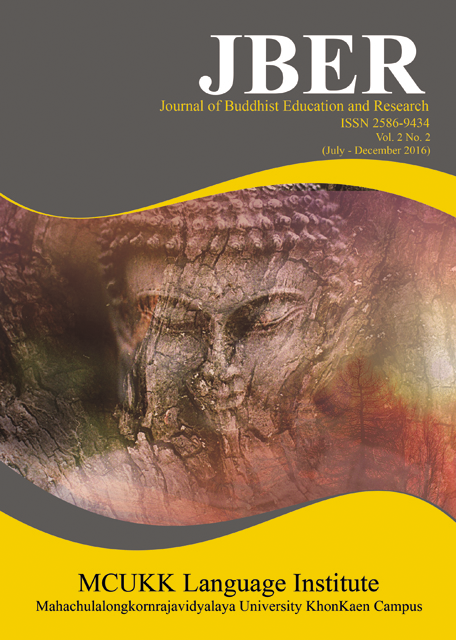A Model Of Stroke Competency Development For Nurses At Sub - District Health Promoting Hospital
Keywords:
Competency Development, Stroke, NurseAbstract
The objectives of this research with mixed methods were 1) to study Needed stroke competency of nurses and methods of developing their com petency at sub-District health promoting hospital; 2) to create and check a model and manual of Stroke competency development for nurses at the sub -district health promoting hospital; and 3) to evaluate the developed model. Three phases of conducting this research were carried out: Phase 1, the literature about the needed stroke competency of nurses was reviewed from three sources i.e., 1) research documents, 2) five experts, and 3) 150 samples who were randomly selected from the nurses working at the sub-district health promoting hospital by a questionnaire with the reliability of 0.992. The statistics used to analyze the obtained data were frequency, percentage, mean and standard deviation. Phase 2, a model of stroke competency development for nurses was drafted and developed by the researcher and was examined and approved by five experts. Phase 3, the model was evaluated by five experts in order to find its appropriateness, concurrence, possibility and correctness. The research results revealed that:
1. The samples’ stroke competency development at the research area consisted of 18 aspects: 1) stroke, 2) acute stroke, 3) respiratory care, 4) cardiovascular care, 5) diabetes hypertensions dyslipidemia, 6) rehabilitation after stroke, 7) fatigue after stroke, 8) positioning and pressure area care, 9) pain control, 10) vision and perception, 11) communication, 12) psychological care, 13) nutrition, 14) excretory, 15) sex after stroke, 16) transfer of care, 17) long term care and 18) end of life care. The most required methods for developing their stroke competency were training, internship, working with experts and workshop.
2. The model stroke competency development for nurses consisted of the following components: rationale, purposes, contents, manual structure, periods of development, development process, and measurement and evaluation.
3. Having evaluated by the experts, the developed model’s appropriateness, concurrence, possibility and correctness was overall found at a high level (=4.265).





